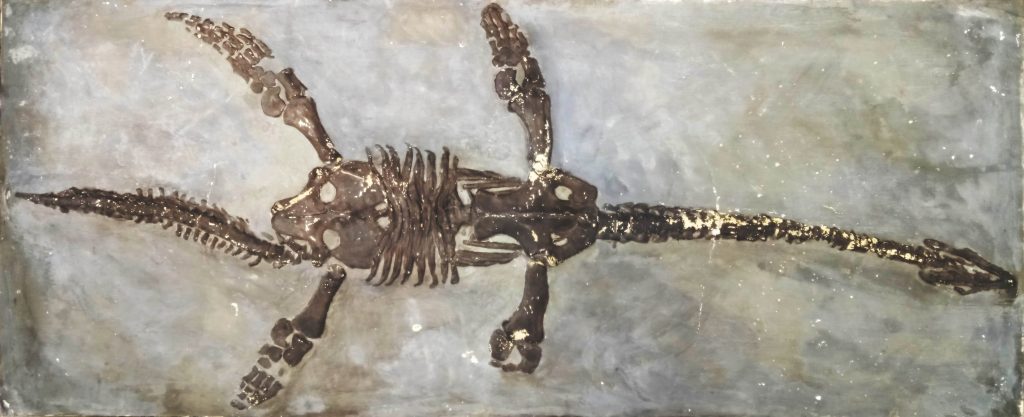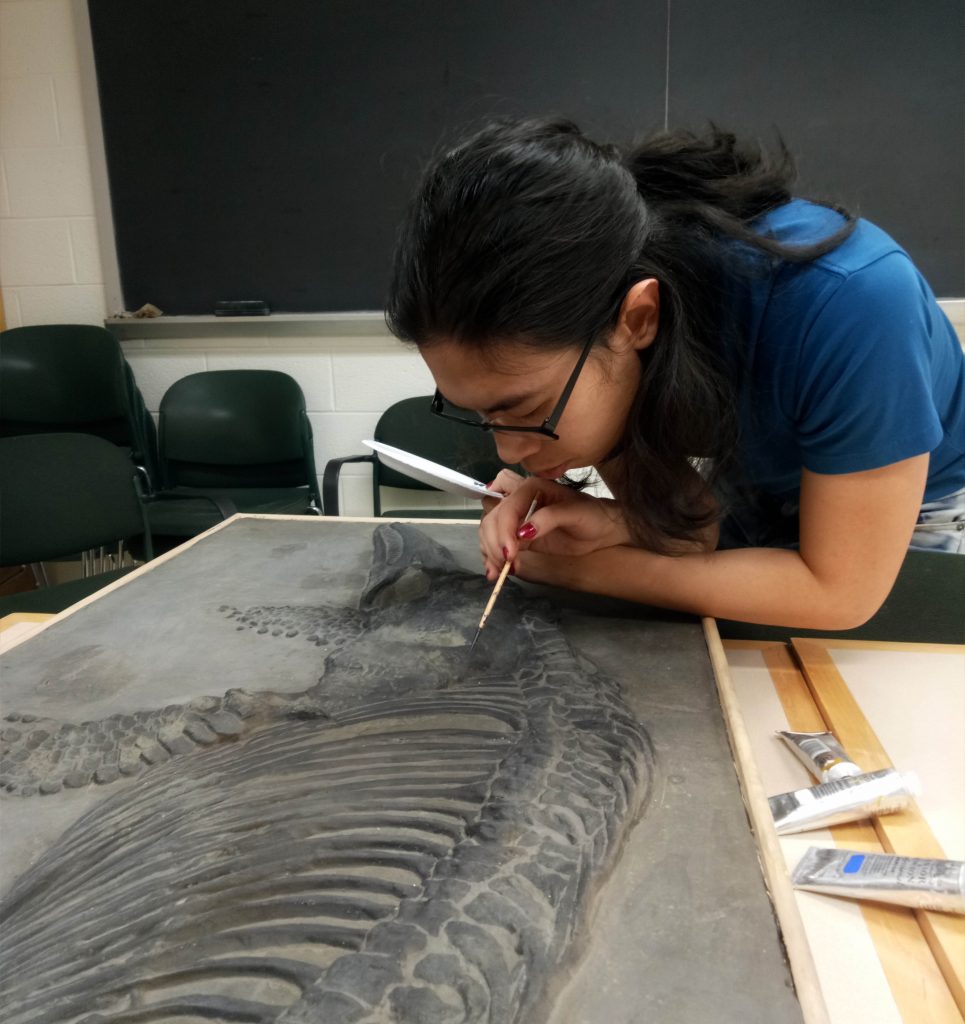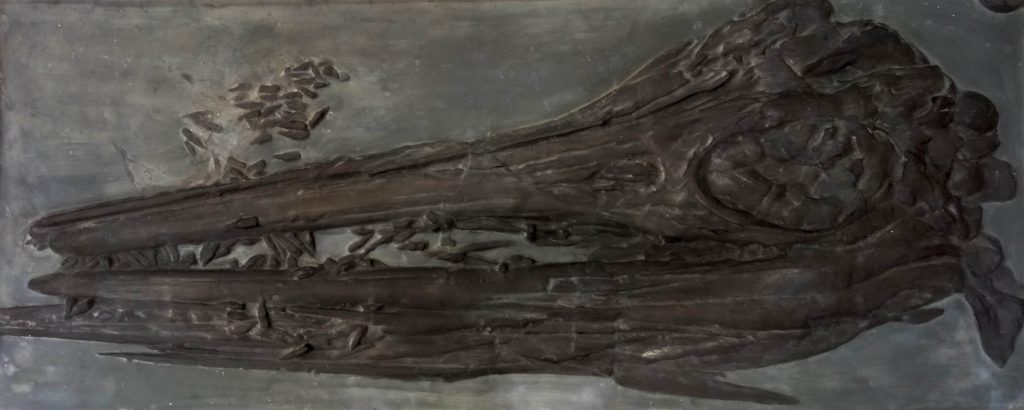
Wesleyan’s remarkable series of fossils casts includes two large specimens of ferocious predatorial reptiles- Plesiosaurus and Ichthyosaurus. The fossil casts were in a dishearteningly deplorable state when they were rediscovered, crated in the Penthouse of Exley. The casts were put in crates when the Wesleyan Museum closed in 1957. We did not know where they were stored, but they were moved to the penthouse of the Exley Science center when the building was occupied in 1970. After 60 years of chill and thaw in the uncontrolled environment, large cracks were running across the surfaces, and the paint was chipped in many places. The Ichthyosaurus communis cast even had a number of jarring holes in various places. We probed the possibilities of salvaging these treasures, conducting extensive research into reversible restorative methods.
Being part of the Ward Series of Fossil Casts, this series of early large casts were once celebrated feature exhibits in major museums worldwide from 1866 onwards. Orange Judd donated a full series of these casts to the Wesleyan Museum when it opened in Judd Hall in 1870. The Plesiosaurus macrocephalus was an early cast of the holotype specimen of its species, and the second of its kind to be found. After almost 150 years since their making, the plaster has shrunk from off-gassing and evaporation, causing the inflexible paint layer to peel off and crackle, and simply “floating” above the plaster instead of adhering to it.

Given their historical significance, great care was taken to employ the least intrusive methods in their restoration. We strove to minimise the changes made to the original, retaining as much of the old paint as possible. The casts were carefully inspected for unstable paint flecks, which were glued back down using acrylic medium. An airgun was passed gently over the casts to remove dust without abrading the fragile paint layer.

A non-shrinking putty was used to fill in the larger holes and cracks in the plaster, some of which were created by early curators nailing labels into the cast itself. The missing paint chips were carefully colour-matched using archival acrylic paints, and filled in using meticulous stippling brushstrokes- a long painstaking process. Artist sponges are used to fill in parts of the background with major blemishes to recreate the natural texture of the casts. As the acrylic paints dry to a finish that looks glossier than the original, distressing of the surrounding matrix was done using fine grit sandpaper buffers, aiming for an earthy texture that is faithful to the original. Each cast took about 20 hours to restore to their formal glory. After applying a thin coat of archival breathable sealant, the casts are ready for show.

Perhaps the modest, undemonstrative splendour of even the most major museums are so ingrained in our minds that we often don’t realise the strenuous effort put into each piece in an exhibition. Perhaps next time, you will take a moment to wonder as you wander, down the galleries of deep time past.
Cover photo: Freshly restored Ichthyosaurus communis cast detail from the Joe Webb Peoples Museum collection at Wesleyan. Photo courtesy of Andy Tan ’21.
